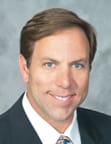The Efficient Ophthalmologist
Being Bigger is Not Always More Efficient
By Steven M. Silverstein, MD, FACS
In our practice, checklists go well beyond prescribed job descriptions. They formulate a rotation of tasks so that no individual or group is assigned repetitive mundane chores, such as doing visual fields all day, or office scut work such as restocking or cleaning the break room. This, in turn, not only promotes cross training, but secondary gains are realized by creating a sense of equality and enhanced morale. It also encourages team building and, by its very design, establishes internal checks and balances.
The principal benefit of checklists applied to regular office tasks and procedures is enhanced efficiency and time-savings achieved by each employee. In organizations both large and small, this translates into significant cost savings in the largest arena of variable expenditure: namely, human resources. There is a genuine cause-and-effect relationship that can be traced back to the efficient — or inefficient — assignment of responsibility and the number of full-time and part-time employees a practice requires.
In the mid 1990s, there were fears that smaller practices would no longer be enrolled as providers for the major insurance companies. The thinking then was that insurers desired to control their own costs by working primarily with large, multispecialty, multi-location ophthalmic practices. In response to what we perceived as a trend, our practice and several other well-established groups or individuals in Kansas City merged to form one large mega-practice.
At our peak, we had 30 practitioners, eight large offices, three ASCs and 350 employees. Rather than enjoying obvious economies of scale by eliminating redundancy, our perceived human resources needs exploded. First, we found that we required additional managers to coordinate this large enterprise. Later, we established an off-site, multi-thousand square foot regional business office, which we thought was necessary to house these managers and other new staff such as central telephone operators, further adding to our staggering monthly overhead.
All this despite the fact that we had ample existing space in our offices for expansion. We were very wrong. And despite our clinical success, we were drowning in our selfcreated costs. It was a bitter lesson.
Had we applied a management checklist to our dilemma, the unnecessary expenses and staff positions would have been clearly illuminated. Instead, once the insurance system scare had passed, we shook hands, deconstructed the mega-practice we had worked so hard to build and returned to the individual locations. A bit wiser, each of us became dramatically more efficient, more profitable and much happier.
Checklists for Maximum Efficiency
We all, of course, have now built checklists into our daily practice operations. But where do checklists provide maximum efficiencies in the clinic? Let me list a few areas here and move on to others in future columns.
► First, we must get our patients in the door. Appointment reminder and recall protocols are essential. Despite various efforts, no-shows and day-of-appointment rescheduling continues to plague most practices.
► Systems for orderly patient check-in and check-out are important, particularly if front-desk staff are also responsible for multi-tasking services, such as answering phones, scheduling patient appointments, collecting copays, reconciling insurance information and managing patient charts.
► Procedures for tracking and curing aged accounts receivable require meticulous attention and benchmarking in order to ensure steady cash flow and sound liquidity.
► Periodic review of office safety protocols, including maintenance of staff and physician CPR/ACLS certification, checking crash carts for expired meds, testing defibrillator charge and activity, and periodic review of staff assignments and responsibilities during a code or building emergency are critical in every practice.
► Checklists help in reordering medical and office supplies and restocking inventory of ancillary services, such as optical, hearing and neutraceuticals.
► Checklists are beneficial in establishing a schedule for renewing/reevaluating service contracts on medical and office equipment such as copiers, fax machines, visual field analyzers and OCTs/lasers. Reviewing service contracts can save substantial overhead dollars by taking advantage of new or renegotiated lower-rate plans.
► Lastly, checklists are essential in surgical counseling to ensure proper informed consent, patient pre- and postoperative instruction, communication with hospital and ASC personnel (i.e., ordering IOLs or corneal tissue), IOL biometry, prescriptions for perioperative medication, arranging transportation and conversing with primary care physicians as well as family members and caregivers. OM

|
Steven M. Silverstein, MD, FACS, is a cornea-trained comprehensive ophthalmologist in practice at Silverstein Eye Centers in Kansas City, Mo. He invites comments. His e-mail is ssilverstein@silversteineyecenters.com. |








